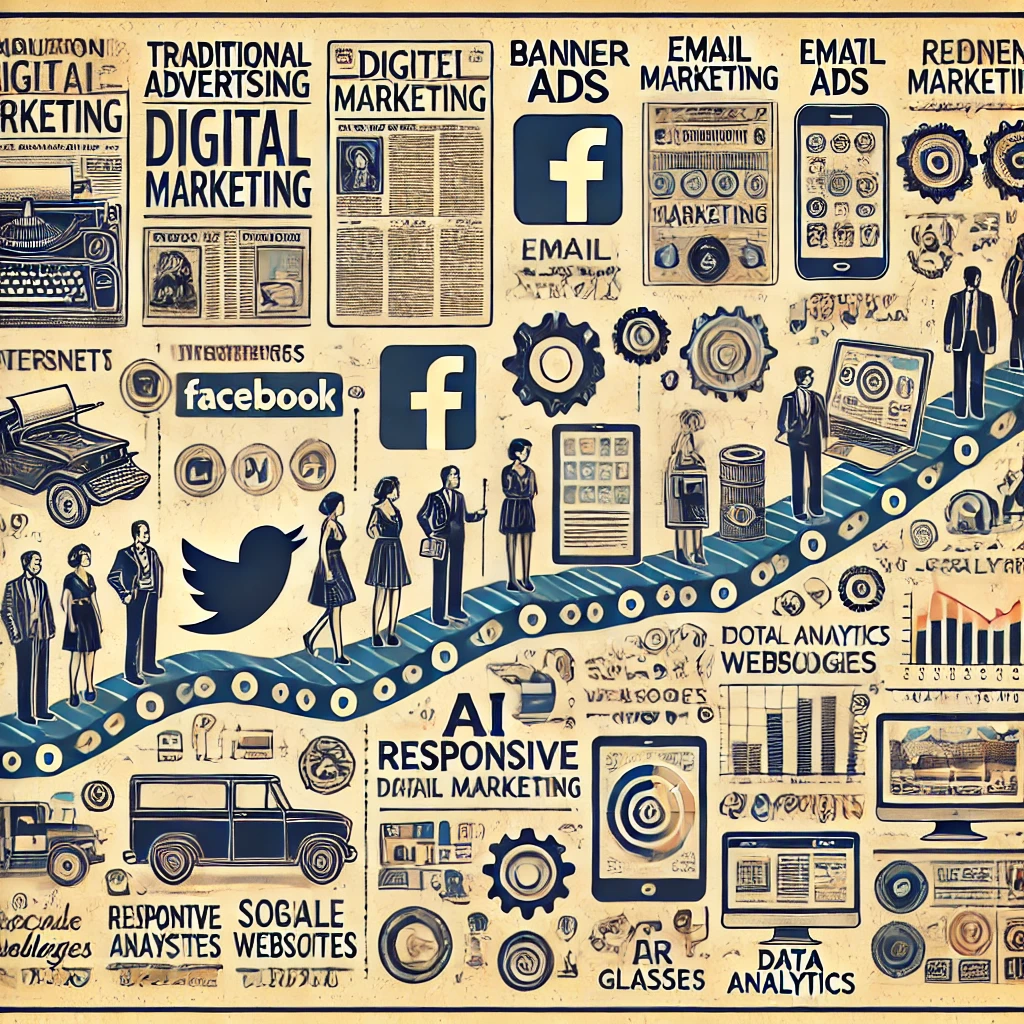Digital marketing has undergone a significant transformation over the past few decades. What began as simple online advertisements has evolved into a complex and dynamic field, encompassing a wide range of strategies and technologies. This evolution reflects changes in consumer behavior, technological advancements, and the increasing importance of data-driven decision-making.
In the early days of the internet, digital marketing was largely an extension of traditional methods. Businesses relied on banner ads, email campaigns, and basic websites to reach their audience. These methods were similar to print advertisements and direct mail, focusing on delivering a message to a broad audience. However, as the internet grew, so did the sophistication of digital marketing techniques. Search engine optimization (SEO) and pay-per-click (PPC) advertising emerged as powerful tools, allowing businesses to target specific keywords and demographics.
The rise of social media marked a significant turning point in digital marketing. Social media marketing allowed for more personalized interactions, fostering brand loyalty and creating communities around products and services. It also introduced the concept of influencer marketing, where individuals with large followings could promote products to their audiences, blurring the lines between celebrity endorsements and everyday recommendations.
Another major shift in digital marketing came with the advent of mobile technology. Smartphones and tablets changed how consumers access information and make purchasing decisions. Mobile optimization became crucial, as websites and advertisements needed to be accessible on smaller screens. Additionally, the development of mobile apps opened new avenues for engagement, with businesses offering exclusive content, rewards, and personalized experiences through dedicated applications.
In recent years, the focus has shifted towards data-driven marketing. The ability to collect and analyze vast amounts of data has revolutionized how businesses approach their marketing strategies. Tools like Google Analytics, customer relationship management (CRM) systems, and marketing automation platforms have made it possible to track user behavior, segment audiences, and deliver personalized content at scale. This has led to the rise of targeted advertising, where businesses can tailor their messages to specific groups based on their interests, behaviors, and demographics.
The latest trends in digital marketing revolve around emerging technologies such as artificial intelligence (AI) and augmented reality (AR). AI-powered chatbots, for example, can provide instant customer service, while AR allows consumers to virtually try products before purchasing. These innovations offer new ways to enhance the customer experience, making interactions more seamless and engaging.
In conclusion, digital marketing has come a long way from its humble beginnings. The evolution from traditional methods to modern, tech-driven strategies reflects the dynamic nature of the field. As technology continues to advance, businesses must stay ahead of the curve, constantly adapting to new trends and consumer preferences to succeed in the digital landscape.
